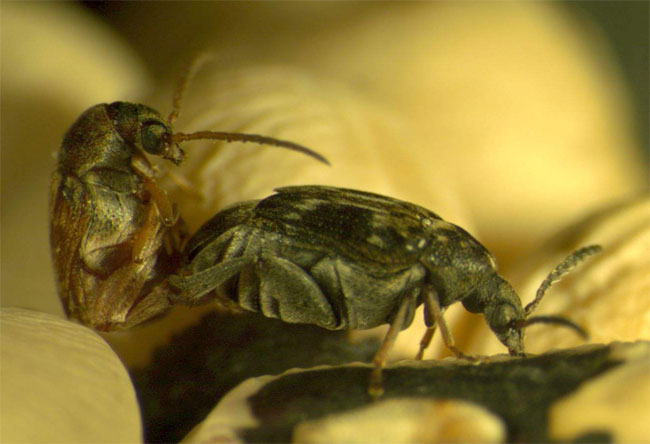Successful Sex Strategy: Be Last in Line

The early bird might get the worm, but the last in line makes the baby.
From bonobo chimpanzees to fruit flies, many female animals mate with multiple partners that often queue up for the event. Studies have shown that the the last male to mate with a female is the most successful at impregnating her. Nobody has understood why.
The last male can take advantage of a more "sperm-friendly" environment created by males that have copulated before him, according to a new model put forth by David Hosken and David Hodgson of the University of Exeter in the United Kingdom.
Sperm ride
Males ejaculate hundreds of millions of sperm into the female reproductive tract, but most don't make it to the egg for fertilization. In mammals, just .001 percent of the ejaculated sperm hit the fertilization target.?
?
"We know that the reproductive tract in females can be a nasty place for sperm," Hodgson told LiveScience. The acidity can kill many sperm, and scientists think some females' immune systems attack sperm as a "foreign object."
Sign up for the Live Science daily newsletter now
Get the world’s most fascinating discoveries delivered straight to your inbox.
The seminal fluid in a male's ejaculate helps to buffer the acidity, creating more viable conditions for sperm. By waiting in line, males could exploit the ejaculate from other males, giving their sperm a cushy ride into the female's uterus to fertilize eggs.
Going last also means the male could lower the amount of sperm in his ejaculate since there's a higher probability of that sperm being successful. Producing sperm is a costly investment and has been shown to require a good chunk of an animal's resting energy.
"They may be able to adjust their behavior and their investment in ejaculate to maximize their probability of being a father and minimizing their expenditure of resources," Hodgson said.
Line up
You might think alpha males would exploit this strategy. But Hodgson said there are many sneaky males in the animal kingdom, such as red deer, that lurk just on the outskirts of a mating arena. Some are weaker than alpha males. "They're like spies, and they rush in whenever they get the chance and inseminate the female," he said.
The finding seems to apply to any organism in which females mate with multiple partners in rapid succession, out in the open where others can watch. The mating needs to be relatively rapid for the physical effects of a prior male's sperm to remain.
This includes females of many fruit-fly species, which re-mate within an hour. The male yellow dung fly will interrupt and take over a copulation, removing and replacing their rivals.
As for human examples, Hodgson said he couldn't think of any.
- A Brief History of Human Sex
- The Sex Quiz: Myths, Taboos and Bizarre Facts
- Longest Known Sperm Create Paradox of Nature
- Survival Skills: Why Sex is Good
- Video: Sex & the Senses
Jeanna Bryner is managing editor of Scientific American. Previously she was editor in chief of Live Science and, prior to that, an editor at Scholastic's Science World magazine. Bryner has an English degree from Salisbury University, a master's degree in biogeochemistry and environmental sciences from the University of Maryland and a graduate science journalism degree from New York University. She has worked as a biologist in Florida, where she monitored wetlands and did field surveys for endangered species, including the gorgeous Florida Scrub Jay. She also received an ocean sciences journalism fellowship from the Woods Hole Oceanographic Institution. She is a firm believer that science is for everyone and that just about everything can be viewed through the lens of science.










